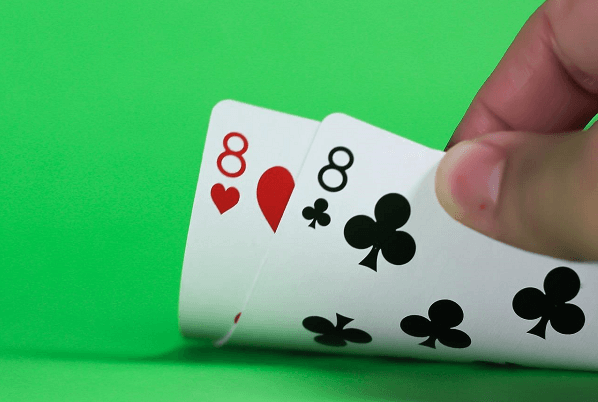A Deep Dive into Blackjack Splitting – Hone Your Skills in Doubling Hands and Boosting Wins

Understanding the moves of hitting, standing, doubling down, and splitting are foundational if you’ve ever ventured into blackjack. But to elevate your game, our extensive guide will enlighten you on the dynamics of splitting cards, the variations in rules, and the strategic advantages of opting to split pairs.
In essence, when you have a pair in blackjack, you can choose to split them into two separate hands, adding new cards to each. This tactically doubles both your potential success rate and the risks involved.
It's crucial to discern the opportune moment to either split or retain your single hand for maximized gameplay outcomes. Our Betsquare guide goes into all the details.
What is Splitting in Blackjack?
Upon receiving a pair of identical cards, like two 3s or two 7s, only you, not the dealer, can split them, leveraging this to your advantage. After splitting, you must approach them as independent hands.
With new cards dealt to each split hand, decide whether to hit, stand, or double down, as per usual procedure. Should you find another pair, you may even consider another split (but first ensure it’s allowed under the rules of play). online blackjack game variations do not allow this).
A key factor is the added cost: when you opt for splitting, you’re effectively doubling your original stake to manage the extra hand, unless you're at a special 'free bet blackjack' table where the first split is free.
Blackjack Splitting Basics
Fundamental rules for splitting in blackjack can strategically enhance your game, though splitting every pair isn't always optimal. The following guidelines are widely advocated.
- Always split Aces and 8s
- Never split 10s
- When it comes to splitting decisions, one must account for the dealer's visible card.
Splitting in blackjack introduces several perks. Firstly, it can fortify your hands’ potency. For instance, splitting Aces gives you a strong start, needing just a 10 to achieve a perfect blackjack.
Moreover, splitting doubles the number of opportunities to beat the dealer. Yet, always weigh the increased split costs.
Finally, treating each split hand as distinct allows tailored strategies for each, based on the subsequent cards dealt.
When playing at a physical casino, communicate your decision to split verbally and with hand gestures, as ambient noise can obscure communication.
To split, position chips equal to your original wager and separate your cards visibly by spreading them apart on the table.
For online or live dealer games, simply use the screen option to split, allowing the software to manage your digital hands.
Blackjack Basic Splitting Strategy
Commonly, blackjack utilizes multiple decks, often four to eight, meaning understanding split timing is pivotal. Implement basic strategies or consult a split chart for guidance.
Guidelines for perfecting your approach to splitting in blackjack by card value:
Pair of 2s to 7s
The strategy of handling pairs differs based on your cards versus what the dealer shows:
- With pairs such as 7s, 2s, or 3s, splitting against a dealer's 2-7 and hitting against 8 through Ace is usually wise, optimizing potential outcomes.
- Split 6s against the dealer's 5 or 6 to exploit their vulnerability, but hit otherwise.
- If holding 6s, split against a dealer’s 3-6 for better odds, but hit against higher showing cards like 2, 7, or up.
Pair of 5s
Never split 5s. Treat as 10, doubling down against the dealer’s 2-9, and hit if they show Ace or 10.
Pair of Aces or 8s
Always divide Aces for a straightforward route to 21 in each hand, though some casinos limit refills post-split. Similarly, splits on 8s are strategic as 16 is weak.
Pair of 9s
Split 9s against a 2-6 or 8-9 dealer card, aiming for potent separate hands. But stand against a 7, 10, or Ace to avoid strong dealer totals.
Pair of 10s
Avoid splitting two 10s as you already possess a formidable hand of 20, optimal against the house.
Exploring Variations in Blackjack Splitting Regulations
Expect diverse rules and strategies for splits at each table, modifying your approach based on the setting.
A notable rule is that some tables restrict any post-split doubling, influencing potential profits despite a good hand.
Where doubling post-split is possible, consider splitting 2s or 3s when the dealer shows 2-7. Under 'no double after split' rules, only split on 4-7 and hit on 2-3.
Under normal play, split on 4s when the dealer shows 5 or 6; without the doubling option, hitting becomes more advisable.
Double Deck
Double deck games introduce varied recommendations compared to single deck, attributed to card count. Opt to split 6s with dealer upcards of 2-6, favoring hits against stronger setups like a 7.
Surrender
More uncommon is the surrender rule, letting players retrieve half their bet before hand play, beneficial against tough initial setups.
Surrender decisions can influence split tactics. A dealer's Ace against your 8s pair might suggest a surrender over a costly split or loss.
Opting for surrender limits your loss to half the stake, a lesser-risk route compared to being outperformed by the dealer.
Parting Words: Split Strategically for Blackjack Mastery
Mastering when to split versus hitting can serve you a significant strategic boost, enhancing chances particularly with Aces or 8s against specific upcards.
Choosing to double down after a split sees success if hand confidence is high, keeping in mind the additional costs involved.
If uncertain about split times, blackjack strategy charts can aid in-game decisions, or review insights on our blog for further clarity. Prepared? Consider signing up with our top picks, blackjack casinos make your opening deposit, and seize a welcome bonus to embark on your blackjack journey.
FAQs
What are the repercussions of encountering another pair post-split?
Should another pair arise post-split, a second split is often viable but requires another equivalent stake, thus increasing expenses.
Is it always better to split Aces?
Always consider splitting Aces, forming two promising hands for blackjack prospects unless restricted by card count limits or payout structures.
What if I'm hesitant about in-game splits?
Adhering to core blackjack stratagems is advisable when in doubt. Sticking with known pair splits, like Aces or 8s, is generally sound unless unsure, where conserving your current hand is less risky.






